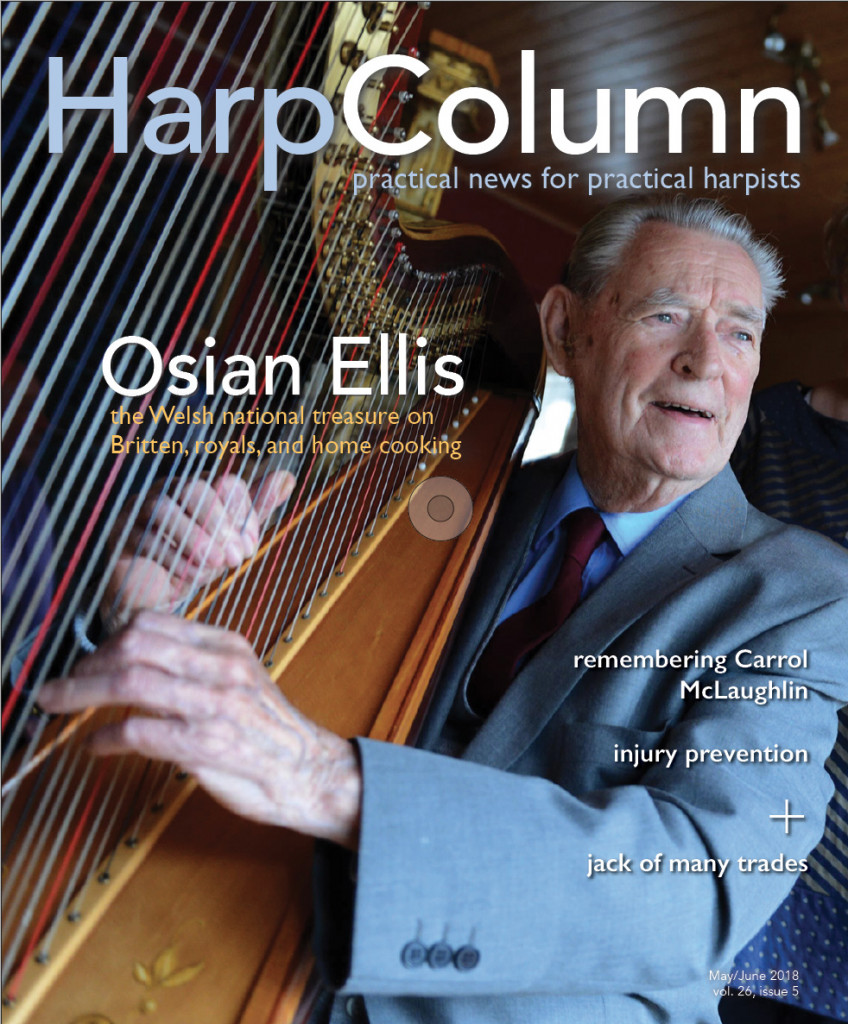Question: If you only have one or two students, how do you create performance opportunities for them?
One of the easiest ways to incorporate learning by doing is to play with your students in lessons. Always have options for harmonizing their exercise, etude, or warm-up materials; always have a couple of duets going on in their lesson assignments; use orchestral parts with two harp parts to supplement etude study; play with them more than you play for them, so that in every lesson they are learning to play their repertoire in a performing context.
For more formal performing opportunities, as in student recitals, partner with another teacher in the area, be they a harpist or someone on another instrument, to do combined recitals. The benefits are legion. The students will meet other young instrumentalists and begin to understand that they have a community of peers; the students will learn from each other that every musical pursuit has its own special “issues,” and the parents will be able to meet other parents and compare experiences and learn from them. Find community ensembles in which your students can participate, maybe with another instrument or in another artistic discipline. You can learn about being a performer in a theatre company, an Irish dance ensemble, or a choir. When your students learn that skills cross disciplinary boundaries, they will be able to translate their comfort levels in performing into whatever discipline they are pursuing.
—Lynne Aspnes has taught hundreds of students during her career. She currently teaches at Arizona State University and directs the Harp Arts Summer Program. She is professor emeritus of harp at the University of Michigan.
Don’t overlook the many alternatives to traditional recitals. As a young student, a lot of my most exciting performance experiences came in the form of gigs. My first official gig was a half-hour of background music for an elementary school event when I was nine, and I believe I made $35. As my playing advanced, my teacher began recommending me to contractors, and I was able to take advantage of dozens of non-recital performance venues, each time expanding my repertoire and building my confidence in front of an audience. Involvement in youth orchestras can also yield chances to perform solo or chamber music: pre-concert recitals, orchestra fundraisers, or outside events coordinated by the orchestra’s administration. It’s hard to find a more enthusiastic audience than the residents of a retirement community. Performing for such a warm, supportive, and interested audience helps to build confidence in a low-risk setting. Scheduling a performance in this type of venue can be as simple as contacting the activities director and asking if they might be interested in a short harp recital. You might consider joining forces with a flute or violin teacher’s studio to create a longer and more diverse program, perhaps including chamber music. It might even have the potential to grow into a once-a-month afternoon recital series.
—Allegra Lilly is principal harpist of the St. Louis Symphony and on the faculty at Brevard Music Center in North Carolina.
There are many ways to create performance opportunities for your harpists! With any size studio, it can be very rewarding to design a musical program, possibly centered on a theme that includes solos, duos, and trios. Organizing rehearsal time is often easier with a smaller group, as is the possibility of close, creative collaboration between the teacher and the students. Once you have a program in mind, seek out venues that encourage community performances, such as libraries and bookstores, senior centers, hospitals, coffee shops, and churches. If you have young students, you can also look into doing presentations with them at their schools. This is a great way for the students to connect with their peers and for the teacher to help share the harp with a wider base of young people. It helps, too, if you showcase different sizes of harps and include an interactive component, such as inviting well-behaved, young audience members to try the harp! If you have more advanced students, connect with their school orchestra and band directors or local youth orchestra programs to encourage programming with harp parts. For some repertoire ideas, check out my article in the January/February 2017 issue of Harp Column titled “The Right Rep.” Keep an eye out as well for local solo and concerto competitions for youth, as these can yield wonderful opportunities for students of all levels. Pursuing these types of experiences can be very motivating, inspiring, and confidence-building! •
—Michelle Gott is professor of harp at the University of Ottawa and director of harp ensembles, Ottawa Youth Orchestra Academy






